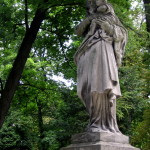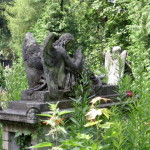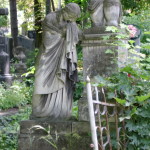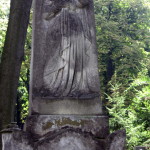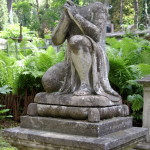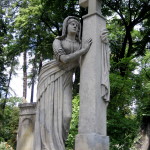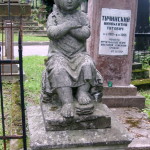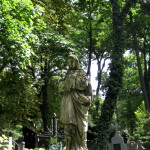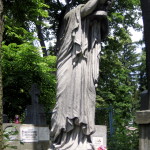Płaczki – Lychakiv Cemetery, L’viv, Ukraine
medium: digital photo
This photo essay reveals a documentary portrait of the Płaczki (The Mourners), found in Lviv’s Lychakiv Cemetery.
The Lychakiv Cemetery is an historic cemetery located in L’viv, Ukraine. The Cemetery is host to an extraordinary number of sculptural forms which evoke and symbolize the Polish tradition of professional and vigilant mourning. These recognizable forms, known as Płaczki (The Mourners), signify the breadth and depth of Polish mourning- the currency of which is translated through the timeless expression of unbearable emotion so aptly set in stone. This photo essay extrapolates on the Polish tradition of mourning and celebration of the dead, in its most exquisite form.
The Lychakiv Cemetery is one of the oldest cemeteries in Europe, and was established in 1786, during a time when the province of Galicia was de facto an autonomous province of the Austro-Hungarian Empire. The history of the power struggles and wars fought over Galicia forms a turbulent chapter in the broad history of East-Central Europe, though it may be summarized that the stewardship of the Lychakiv Cemetery has largely rested in the hands of L’viv’s ethnic Polish inhabitants.
The city of L’viv was founded in 1256, in Chervena Rus’, by King Danylo Halytskyi. In 1349, during the reign of King Kazimierz the Great, L’viv and the lands of Chervena Rus’ were incorporated into the Kingdom of Poland. L’viv was governed under the auspices of the Kingdom of Poland from 1349-1772, the Austrian Empire from 1772-1918, and the Second Polish Republic from 1918-1939. With the invasion of Poland at the outbreak of the second World War, L’viv was eventually annexed by the Soviet Union, forming a part of the Ukrainian Soviet Socialist Republic from 1939-1941. Between 1941-1944, L’viv fell under German occupation, and was located within the Nazi General Government. In 1944, L’viv was captured by the Soviet Red Army and the Polish Home Army, and by 1945- according to the agreements of the Yalta Conference, was again integrated into the Ukrainian SSR. Thereafter, the majority of the surviving pre-war inhabitants of the city were resettled into Polish territories annexed from Germany. Thereafter, an epoch of devastation and destruction of historical monuments located at the Cemetery began, including the Soviet bulldozing of the memorial to the Lwów Eaglets (Orlęta Lwowskie). However, in 1975, the Lychakiv Cemetery was declared an historical monument and the degradation ended. Since the late 1980s, the Cemetery has seen constant rebuilding and refurbishment, and continues to be one the principal cultural and religious attractions of L’viv.
Since inception, the Lychakiv Cemetery has been the main necropolis of the city, providing burial grounds to the city’s intelligentsia, middle and upper classes, and working class. The Lychakiv was used by all Christian sects, including: Roman Catholics, Byzantine Catholics, Protestants, and Orthodox Christians.














